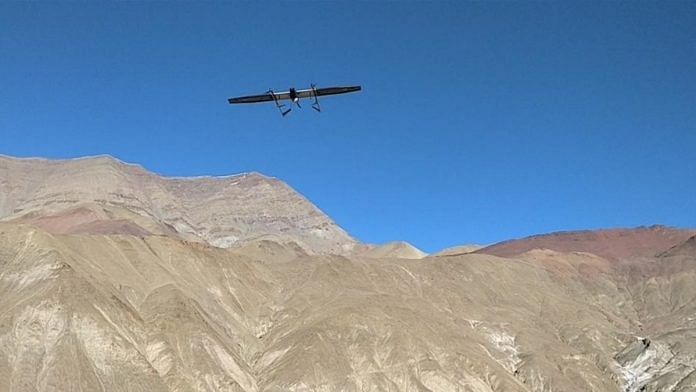It is abundantly evident that India needs to be quick on the draw if it is to forestall similar attacks within our own territory. Our Integrated Air Defence System (IADS) worked well to neutralise Pakistani drone attacks during Operation Sindoor, but these defensive measures were focused on the areas bordering Pakistan. We are surrounded by inimical countries or countries that harbour terror groups. Given these realities, our vital installations are no more than a few hundred km from any border, making the institution of 360-degree preventive and precautionary measures all the more urgent.
Countering drone attacks against targets in the hinterland, such as airfields, will involve a combination of technology, tactics, and infrastructural flexibility. Some of the measures that need to be initiated are:
Integrated sensor networks: Deploying a combination of radar, radio frequency (RF) detectors, and optical sensors to create a comprehensive surveillance system. An upgraded IADS network is needed to detect, track, and classify drones at various ranges, providing multi-directional early warning and situational awareness over the entire Indian airspace.
Geofencing: Implementing virtual boundaries around critical areas that trigger alerts when unauthorised drones enter restricted zones. Enhanced geofencing using 3D modeling to adapt to terrain and operational needs will offer a dynamic defence perimeter, without curtailing own operational freedom.
Radio frequency Jamming: Utilising directional RF jammers to disrupt communications between a drone and its operator, causing the drone to return to its launch point or land. However, this method is effective only against drones relying on RF links, and not on pre-programmed ones.
Microwave and DEW: High-Power Microwave (HPM) systems that emit concentrated microwave pulses to disable drone electronics are particularly effective against drone swarms due to their ability to engage multiple targets simultaneously. Radio Frequency Directed Energy Weapons (RFDEWs) systems, on the other hand, emit targeted RF energy to disrupt or damage the electronic components of drones, offering a cost-effective and scalable solution for the defence of military bases and other large, vulnerable areas. The Defence Research and Development Organisation (DRDO), which is already working on such projects, should fast-track the development of these systems.
Anti-Drone mesh or Cope cages: Installing metal lattice structures around aircraft and critical infrastructure/assets can physically prevent drones from making direct contact, reducing the risk of damage from explosive or kinetic impacts. However, the protective value of such cages is limited, especially when sensitive equipment is involved. A better alternative would be to have hardened shelters or, better still, move everything underground. Using low-tech alternatives like smokescreens to obscure the view for first-person view (FPV) drones is also possible.
Quick Reaction Teams (QRTs): Designating specialised trained units like the Air Force’s ‘Garuds’ or the National Security Guard (NSG) to respond to drone threats would enable swift action to neutralise or mitigate attacks. Each military installation will have to institute a system of ‘look-outs’ who can sound the alarm the moment an unidentified flying object is spotted.
Training and preparedness: Regular drills and training programmes for personnel to enhance readiness and ensure an effective response to drone incursions. This includes familiarisation with detection systems, engagement protocols, and coordination procedures. The support of the local population, who can act as ‘spotters’ and civil-military cooperation, will be vital.
Implementing a combination of these measures can significantly enhance the defensibility of airfields and critical infrastructure against drone threats, even in the depth areas far from the frontlines. Equally important, though, are some of the measures that have to be taken in the civilian domain, by the government.
What these drone attacks have magnified is that there is no classical front line and that the entire country is the battlefield. That being so, many rules and regulations that have been ignored for want of legislation or political expediency need to be looked at. The declaration of ‘no-fly zones’ in the vicinity of vulnerable areas needs to be notified and made a punishable offence, inviting severe penalties under the National Security Act, and not treated merely as a minor civil offence.
The restrictions on construction near the periphery of military installations need to be strictly followed. As things stand now, the Ministry of Defence (MoD) guidelines under the Works of Defence Act 1903 are being blatantly violated. Even when violations are observed and reported, they are dismissed by local authorities, including the courts and police, in sympathy with the local population.
In one instance, the even issued orders to ignore the MoD guidelines in a case about construction activities. This short-sighted approach to matters of national security can have far-reaching, catastrophic consequences. Civil multi-story buildings hugging the boundary walls from where attacks on specific targets and personnel can be launched and controlled by FPV drones present a very real and potent danger.
Due attention also needs to be paid to the multitude of drone and anti-drone companies that have proliferated in the last few years. It must be made mandatory for all such companies to register themselves and provide details of their manufacturing or assembly capacities, with a record of sales and verified end-users. An underground market for drones cannot be allowed to flourish. All drones need to be registered at the nearest police station, including their technical parameters. Unauthorised possession or sale of drones needs to be made an offence through suitable legislation, on the lines of the Arms Act. All agencies need to work seamlessly to deal with this emerging threat.
Ukraine’s drone attack on Russian airfields has been described as Russia’s Pearl Harbour moment. The US suffered significant losses after Japan’s surprise attack on its Pacific fleet, as has Russia now. However, let us not forget that the US survived and, through the wrecks of sunken ships, rose and won the war. What the future portends is unclear, but we need to prepare for all eventualities. Forewarned is forearmed.
(Edited by Ratan Priya)








